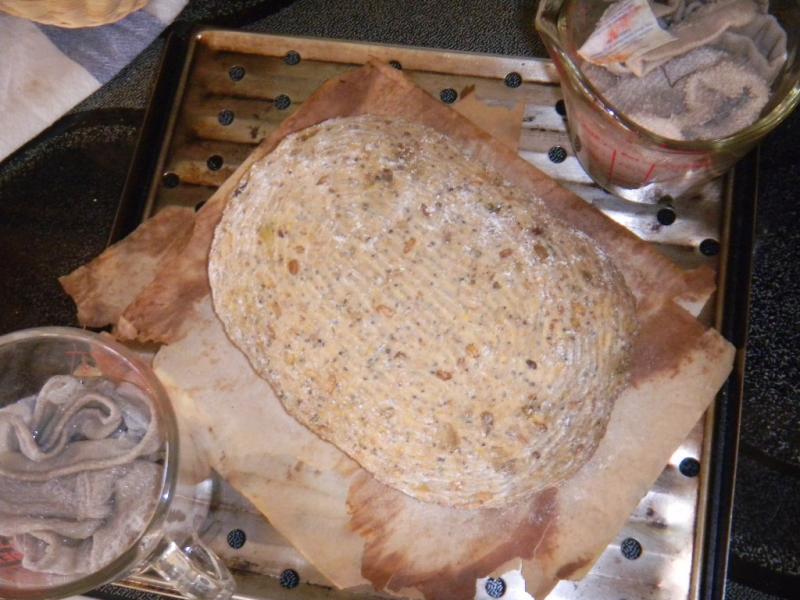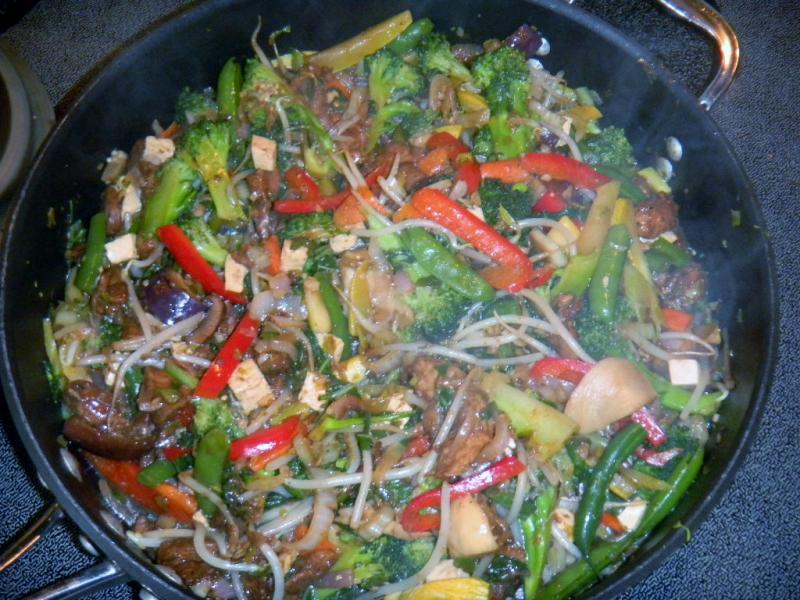We are now officially on the summer baking schedule. No more large loaves. Only 1 small one or possibly 2 if baked on the same day. All bred baking is done in the mini oven outside. This particular bake came in at over 1,300 g so it will have to be baked as 2 loaves one after the other to fit the mini oven. Lucy isn’t quick with basic math.

My apprentice quickly forgets just about everything and the size of a loaf that fits in the MO is something she never knew to begin with - like every thing else worth knowing. I have noticed that she is really good at hunting geckos, eating them and then upchucking the gooey mess on your summer bare feet. Amazing really…. so don’t think you can catch a gecko with your bare teeth like she can.

This bread is what I would call our almost everyday bread that we would like to eat if we ever made the same bread more than once and had a favorite one dominating our bake list. Thankfully, my apprentice forgets what that last bake was much less what her favorite might be other than knowing DaPumperizing any bread is way better than not doing so.

.The only thing missing is a dried fruit, I had a variety of them laid out and ready to be included but Lucy forgot all about them. When I asked, she said that with the molasses and honey already in the mix, the sweetness of the fruits wasn’t needed. Odd how these recipes come together especially after traversing torturously through such a tiny brain as hers.

We were going for multi grain sour so we used 10 g each of our rye and whole wheat starters and used all the whole grains in the 3 stage levain. The whole grains ended up at 36% if you do not include the wholegrain soaker and the levain was 20% of the total weight. We like to use a larger levain when making a bread that is jam packed full of add ins.

We refrigerated the levain for 24 hours after it had risen 25% after the 3rd stage feeding to increase the sour. It rose another 25% in the fridge before being warmed up and allowed to finish its 3 stage doubling the next morning. The whole grains in the levain included, barley, farro, spelt, wheat, and rye. Lucy tries to keep the whole grains in the levain so they have a really good chance of softening up as much as possible.


We added some corn, oats and potato to the AP dough flour because we like the flavors they bring to the party. We scalded; whole wheat, rye, barley, farro, and spelt berries before putting them in the fridge overnight to soak and soften up. They were well drained before being added to the dough.

The add ins included home made red and white malt, honey, molasses, ground flax and ground sesame seeds, pumpkin seeds, sunflower seeds and pistachios,. We tossed in some Toadies since they are nearly required to enhance the flavor of every bake and a little VWG to bring up the gluten to an acceptable level .

Bake day breakfast.
The autolyse included everything except the pumpkinseeds, sunflower seeds, pistachio nuts and the whole berry scald. The autolyse was done while the levain warmed up and finished doubling in the morning - about 3 hours.

Once the levain and the autolyse came together we did 10 minutes of slap and folds to develop the gluten and then let it rest for 15 minutes in an covered and oiled bowl. We did 3 sets of S&F’s on 15 minute intervals where the scald and remaining seeds and nuts were incorporated on the first one and thoroughly distributed by the third set. After a 1 hour ferment on the counter, into the fridge it went for its 16 hour bulk retard.

After taking the dough out of the fridge we divided it in half and then refrigerated half. This way we could maintain a time window of 45 minutes between the 2 loaves. This accounted for one loaf to bake off, the oven come back to temperature with steam in place and be oven be ready just in time for the 2nd loaf.

We shaped the dough cold into small ovals and for a little excitement, the first one we proofed seam side down so it would bake seam side up without slashing and the 2nd one we placed seam side up and slashed it. The bread was ready to into the oven 2 1/2 hours after coming out of the fridge.

The mini oven was pre heated to 500 F and (2) of Sylvia’s steaming Pyrex cups, half full of water with a dish rag in each, were heated in the microwave. We overturned the bread cross wise onto the top of the vented broiler pan covered in parchment paper. The bottom of the broiler pan was preheated in the mini oven.

This bread made a fine balogna and brie sandwich with veggies, fruits and cheese.
A half a cup of water was put in the bottom of the broiler pan right before the broiler top, with the bread and steaming cups was placed on top of it. The small space where the bread takes up 25% of it and the mega steam applied usually makes the mini put crust on bread like a commercial bakery oven. Our best breads have always come the mini oven.

How did that stir fry from last night's dinner get in there?
Once the bread went in, we steamed for 2 minutes and then turned the oven down to 450 F for 13 more minutes. At the 15 minute mark, the bottom of the broiler pan came out with Sylvia’s steaming cups and the bread was left to bake on the top of the broiler pan at 400 F, convection this time.
We turned the bread 180 degrees every 5 minutes and flipped itnover on the top for the last 10 minutes of baking to get the bottom as brown as the top 20 minutes after the steam came out the bread tested 205 F on the inside at 35 minutes total baking time.
Once removed to the cooling rack we noticed that the bread had not cracked mightily along the seam as we thought it would. It wasn’t a lack of steam, possibly 98% proofed? It did brown nicely, was crunchy with very small blisters and it smelled great.
The 2nd loaf was slashed before it went in the mini oven and baked the same way. It to did not spring or bloom much and did not bake as dark on the outside. It too softened a little as it cooled but the crust was still crunchy and very tasty.
With the crumb not as open as our usual, maybe the bread was under proofed? The crumb was soft and moist like always. Maybe there was just so much stuff in this bread it had a hard time getting lift? Usually we would put YW in these kinds of breads to open the crumb and probably should have this time. It passed the poke test and it looked like it had nearly doubled though.
The great thing about this bread is that it is a fine tasting bread. My daughter said this is the only bread I should make. The flour mix, corn, potato, scald, Toadies, ground flax and sesame seed, pistachios pumpkin and sunflower seeds really make this a tasty treat.
Formula
WW and RyeSD | Build 1 | Build 2 | Build 3 | Total | % |
WW & Rye SD Starter | 20 | 0 | 0 | 20 | 3.66% |
Rye | 4 | 8 | 18 | 30 | 5.49% |
Farro | 4 | 8 | 18 | 30 | 5.49% |
WW | 4 | 8 | 18 | 30 | 5.49% |
Barley | 4 | 8 | 18 | 30 | 5.49% |
Spelt | 4 | 8 | 18 | 30 | 5.49% |
Water | 20 | 40 | 40 | 100 | 18.32% |
Total | 60 | 80 | 130 | 270 | |
| | | | | |
WW and RyeSD | | % | | | |
Flour | 160 | 29.30% | | | |
Water | 110 | 20.15% | | | |
Hydration | 68.75% | | | | |
| | | | | |
Levain % of Total | 20.47% | | | | |
| | | | | |
Dough Flour | | % | | | |
Corn Meal | 12 | 2.20% | | | |
Rolled Oats | 12 | 2.20% | | | |
Potato Flakes | 12 | 2.20% | | | |
AP | 350 | 64.10% | | | |
Dough Flour | 386 | 70.70% | | | |
| | | | | |
Salt | 10 | 1.83% | | | |
Water | 310 | 56.78% | | | |
Dough Hydration | 80.31% | | | | |
| | | | | |
Total Flour | 546 | 100.00% | | | |
Water | 420 | | | | |
T. Dough Hydration | 76.92% | | | | |
Whole Grain % | 35.90% | | | | |
| | | | | |
Hydration w/ Adds | 74.91% | | | | |
Total Weight | 1,319 | | | | |
| | | | | |
Add - Ins | | % | | | |
Red Rye Malt | 3 | 0.55% | | | |
White Rye Malt | 3 | 0.55% | | | |
Honey & Molasses | 20 | 3.66% | | | |
Pumpkin 30, Sunflower 30 & Pistachio 50 | 110 | 20.15% | | | |
Ground Flax & Sesame Seeds | 20 | 3.66% | | | |
Hemp & Chia Seeds | 40 | 7.33% | | | |
Toadies | 12 | 2.20% | | | |
VW Gluten | 10 | 1.83% | | | |
Total | 218 | 39.93% | | | |
| | | | | |
Scald | | % | | | |
WW Berries | 25 | 4.58% | | | |
Rye Berries | 25 | 4.58% | | | |
Barley | 25 | 4.58% | | | |
Farro | 25 | 4.58% | | | |
Spelt Berrries | 25 | 4.58% | | | |
Total Scald | 125 | 22.89% | | | |
| | | | | |
Scald is the dry weight. | | | | | |
Dough weighed 1,400 g with wet scald | | | | | |
Bread weighed 622 g each after baking | | | | | |